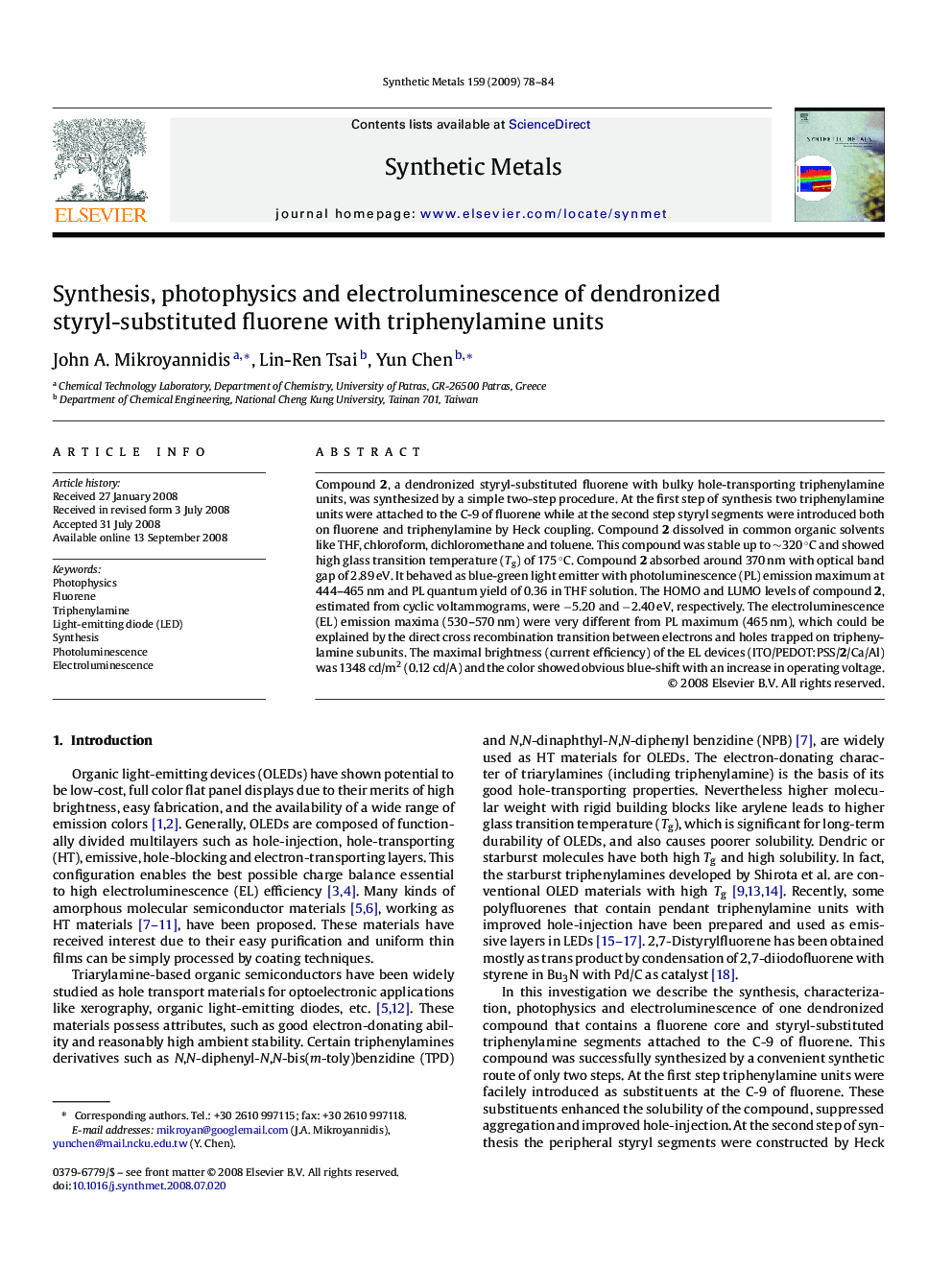| Article ID | Journal | Published Year | Pages | File Type |
|---|---|---|---|---|
| 1443226 | Synthetic Metals | 2009 | 7 Pages |
Compound 2, a dendronized styryl-substituted fluorene with bulky hole-transporting triphenylamine units, was synthesized by a simple two-step procedure. At the first step of synthesis two triphenylamine units were attached to the C-9 of fluorene while at the second step styryl segments were introduced both on fluorene and triphenylamine by Heck coupling. Compound 2 dissolved in common organic solvents like THF, chloroform, dichloromethane and toluene. This compound was stable up to ∼320 °C and showed high glass transition temperature (Tg) of 175 °C. Compound 2 absorbed around 370 nm with optical band gap of 2.89 eV. It behaved as blue-green light emitter with photoluminescence (PL) emission maximum at 444–465 nm and PL quantum yield of 0.36 in THF solution. The HOMO and LUMO levels of compound 2, estimated from cyclic voltammograms, were −5.20 and −2.40 eV, respectively. The electroluminescence (EL) emission maxima (530–570 nm) were very different from PL maximum (465 nm), which could be explained by the direct cross recombination transition between electrons and holes trapped on triphenylamine subunits. The maximal brightness (current efficiency) of the EL devices (ITO/PEDOT:PSS/2/Ca/Al) was 1348 cd/m2 (0.12 cd/A) and the color showed obvious blue-shift with an increase in operating voltage.
